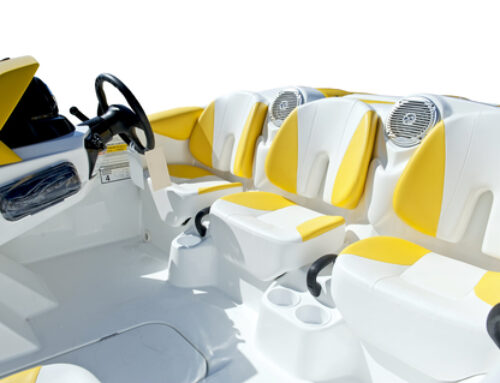$703 million in national grant funding for port infrastructure
The U.S. Department of Transportation announced more than $703 million to fund 41 projects in 22 states and one territory that will improve port facilities through the Maritime Administration’s Port Infrastructure Development Program. The funding, made possible by the Bipartisan Infrastructure Law and additional Congressional appropriations, will benefit coastal seaports, Great Lakes ports and inland river ports, helping improve supply chain reliability through increased port capacity and resilience, more efficient operations, reduced port emissions, and new workforce opportunities.
The Port Infrastructure Development Program (PIDP) supports efforts by ports and industry stakeholders to improve port and related freight infrastructure to meet the nation’s freight transportation needs and ensure our port infrastructure can meet anticipated growth in freight volumes. The program provides planning, capital funding, and project management assistance to improve ports’ capacity and efficiency. The PIDP provides funding to ports in both urban and rural areas for planning and capital projects. It also includes a statutory set-aside for small ports to continue to improve and expand their capacity to move freight reliably and efficiently and support local and regional economies.
More than 60% of the awards will benefit ports in historically disadvantaged communities and several of the projects will help reduce emissions at the ports through electrification. Additionally, more than $150 million in awards include a focus on electrification of port equipment to reduce emissions and improve air quality. The awards also include nearly $100 million for port projects that will advance offshore wind deployment–in support of President Biden’s bold goal of deploying 30 gigawatts of offshore wind by 2030, which is enough to power 10 million homes with clean energy, support 77,000 jobs and spur private investment up and down the supply chain.
Select grants include:
- The JAXPORT EXPRESS Project ($23,518,000), Jacksonville, Fla.
The project includes five primary components: 1) installation of electrified refrigerated container stacks; 2) procurement of six hybrid-electric rubber-tired gantry cranes; 3) procurement of 16 battery-electric forklifts, ten battery-electric yard tractors, and seven Tier 4 diesel top picks; 4) installation of 15 high-power direct current fast charging stations and make-ready stub-outs; and 5) development of a replaceable and scalable plan for transitioning the port and local maritime industry to zero-emission technologies.
- Salem Wind Port Project ($33,835,953), Salem, Mass.
The project will redevelop a vacant industrial facility into a marshalling area for offshore wind (OSW) energy projects. The project includes construction of a 700-foot-long wharf and bulkhead that will be able to handle oversized and heavy cargoes and will be able to serve as a loadout and assembly location. The project also includes improvements to approximately 23 acres of adjacent uplands to create a laydown area adjacent to the loadout and assembly space.
- Project Steel Wheel – Columbus Dock Expansion ($6,123,225), Columbus, Miss.
The project includes design, engineering, construction, and inspection of a new rail spur with approximately 10,000 linear feet of track and three transload docks that will provide direct rail access for transloading cargo between barges and railcars at the Lowndes County West Bank Port. The port does not currently have direct rail access and the new rail spur will connect the port terminal to an existing railroad line operated by Kansas City Southern (KCS).
- Port of Camden Access and Infrastructure Resiliency Project ($25,000,000), Camden, N.J.
The project will upgrade a functionally obsolete and structurally deficient truck route to improve access to the Port of Camden from I-676 by reconstructing nearly three miles of key roadway infrastructure. Project elements include truck turning radius improvements, pavement reconstruction, resurfacing and reconstruction of curbs and sidewalks, new stormwater drainage and green infrastructure, sewer repairs, ADA ramps, traffic calming, new traffic signals and crosswalks, improved street lighting, striping and new signage.
- Cleveland-Cuyahoga County Port Authority ($27,223,711), Cleveland, Ohio
The project consists of both development phase (planning, permitting, engineering, and design) and construction activities at the Port of Cleveland. It will modernize a 144,000-square-foot warehouse (Warehouse A); expand stormwater collection and treatment infrastructure; construct a modernized maintenance and repowering facility for terminal equipment; and install electric infrastructure to meet the power requirements of ship cold ironing and electrified cargo handling equipment.
- Grays Harbor Terminal 4 Expansion & Redevelopment Project ($25,500,000),
Aberdeen, Wash.
The project includes the construction of an additional 50,000 feet of rail to accommodate unit trains; railcar storage; the repurposing of a 50-acre brownfield site into a breakbulk cargo handling and laydown area; access and roadway improvements; replacement of marine terminal fendering systems and related site improvements.
- Port of Green Bay Site Development Project ($10,134,800), Green Bay, Wis.
The project funds the first phase of redevelopment of a former power plant site into a new port terminal. The project includes the following components: engineering services; clearing and clean-up of the existing brownfield site; construction of new dock walls and bulkheads; dredging; placement of fill behind dock wall and bulkheads; construction of stormwater collection and treatment facilities; installation of bollards and crane pads; asphalt resurfacing; new roads and utilities; truck scales; construction of an office building; and repair and extension of a rail spur with installation of three switches.
For a full list of FY22 PIDP award recipients and to learn more about the program, click here.
 TEXTILES.ORG
TEXTILES.ORG 





